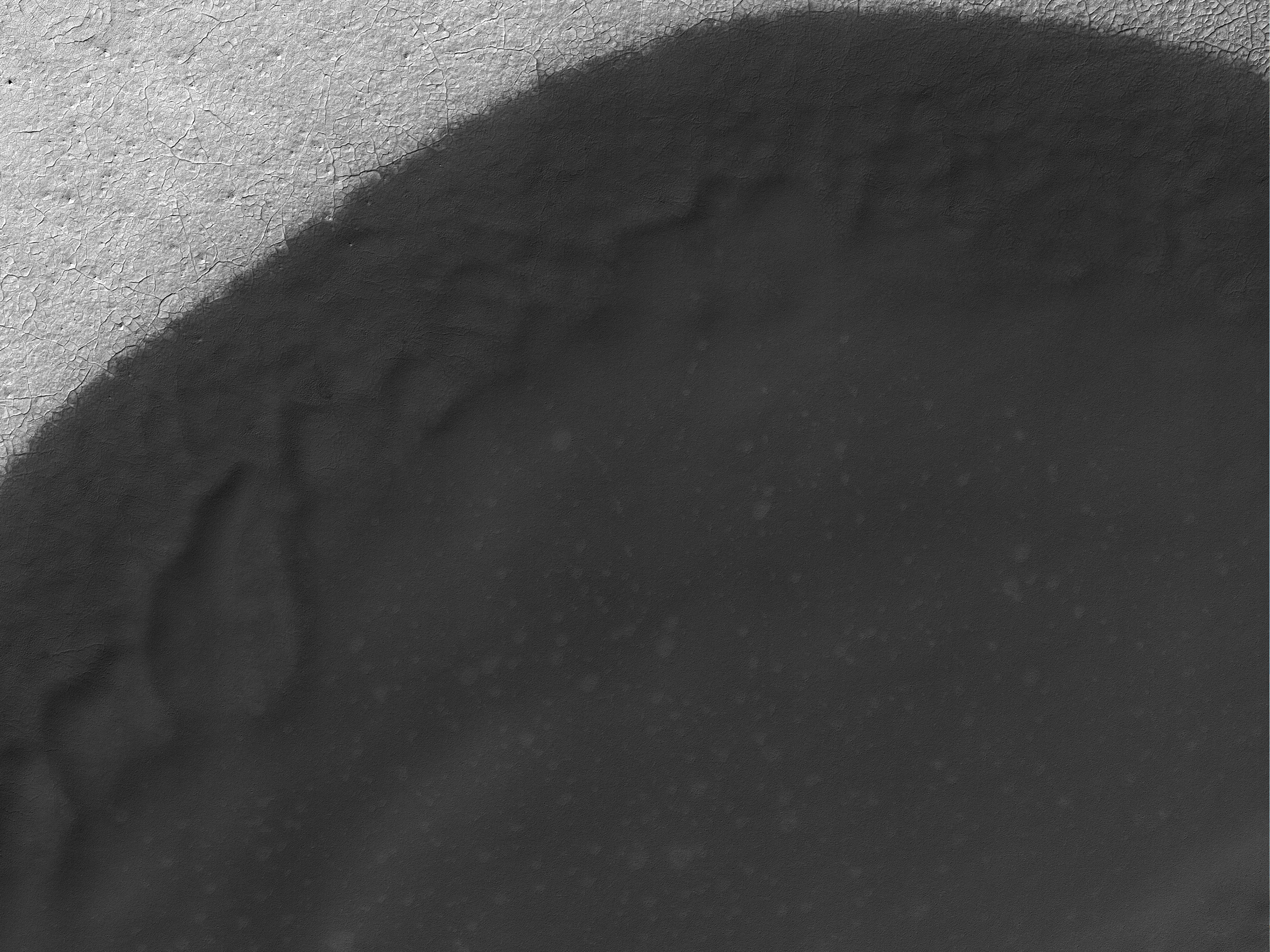Sand dune populations on Mars can vary widely with respect to morphology, relief, and activity. One of the most striking examples occurs with the many dune fields of the high southern latitudes.
When we venture south of -60 degrees latitude, we see increasing signs of dune degradation, with subdued dune brinks and broad sandy aprons, rather than
sharp, dune crests and distinct boundaries. Dunes this far south are also very modest in height, often consisting solely of flat sand sheets. Additionally, global monitoring campaigns are revealing a noticeable lack of changes in these bedform positions, whereas many dunes and ripples to the north
are migrating across the surface.
This image shows a moderate sized dune field (-72 degrees latitude) that displays most of these morphologic features and a
noticeable absence of dune crests. This transition is likely related to polar processes, ground ice, and changes in regional climate relative to the rest of the planet.
ID:
ESP_049502_1080date: 16 February 2017
altitude: 247 km
https://uahirise.org/hipod/ESP_049502_1080
NASA/JPL-Caltech/University of Arizona
#Mars #science #NASA
